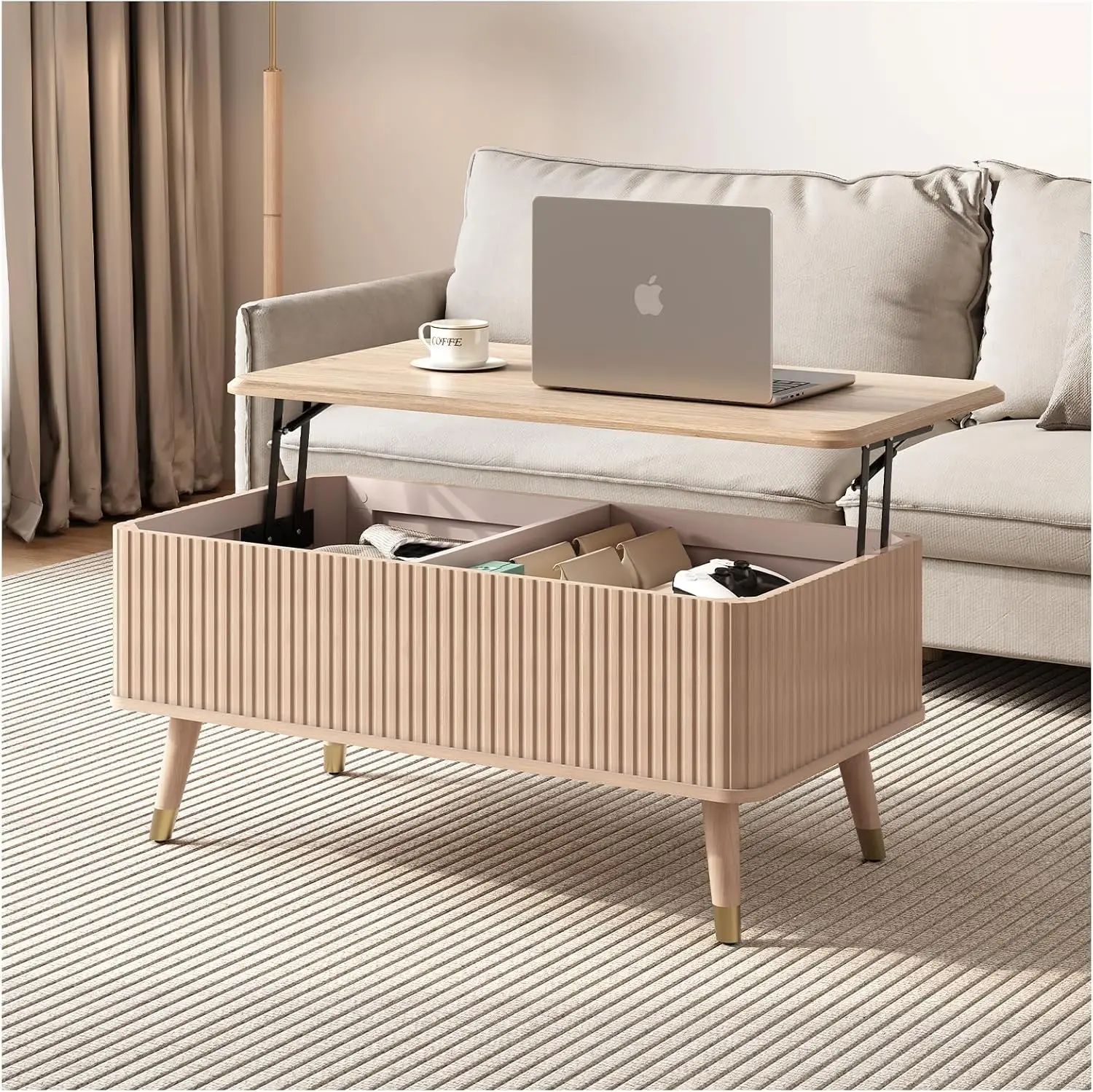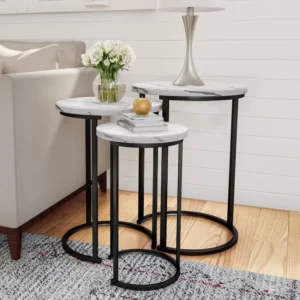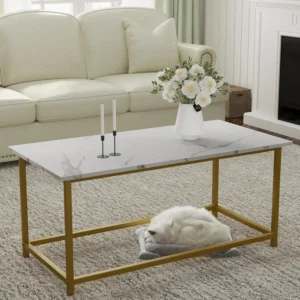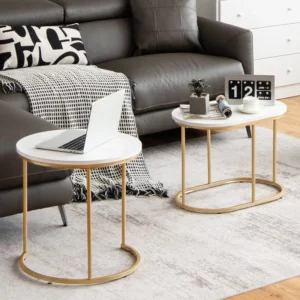The Enduring Appeal of Square Coffee Tables: Form Meets Function
The perfect coffee table does more than just hold your beverages and remote controls—it serves as the cornerstone of your living space, bringing together both aesthetic appeal and practical functionality. Square coffee tables, with their clean lines and balanced proportions, have emerged as versatile centerpieces that effortlessly blend these two essential qualities.
If you’re researching coffee table options, you’ve likely noticed the wide variety of shapes available. While round, rectangular, and oval tables all have their merits, square coffee tables offer a unique combination of benefits that make them worth special consideration. Their geometric symmetry creates a sense of spatial harmony, while their practical shape delivers functional advantages that enhance daily living.
Throughout history, square tables have maintained a consistent presence in interior design, from traditional parlors to contemporary lofts. Their enduring popularity stems from an ability to adapt to changing styles while maintaining their core benefits of balance, proportion, and practicality. Modern interpretations of intelligent black mid-century coffee tables showcase how this classic shape continues to evolve while honoring its fundamental strengths.
In this guide, we’ll explore the numerous advantages square coffee tables offer—from their spatial harmony and functional excellence to their design versatility and practical benefits for various living situations.
Perfect Spatial Harmony: How Square Tables Balance Your Living Area
The geometric perfection of a square coffee table brings a sense of order and balance to living spaces that few other shapes can match. With four equal sides, these tables create visual symmetry that naturally organizes the surrounding elements of your room. This inherent balance makes square tables particularly effective at anchoring seating arrangements, establishing a clear focal point that draws the eye and grounds the space.
Unlike irregularly shaped furniture pieces that can create visual tension, square coffee tables contribute to a sense of order and calm. Their clean lines and predictable shape allow them to integrate seamlessly with various furniture configurations, whether you have a traditional sofa-and-chairs arrangement or a more eclectic collection of seating options.
The balanced proportions of square tables also make them remarkably versatile in different room settings. In a large open-plan living area, a substantial square coffee table can help define and contain a conversation zone. In more compact spaces, the predictable geometry helps maintain clear traffic paths while maximizing the available surface area. For those seeking ideal options, our mid-century modern square coffee tables offer designs that exemplify this perfect spatial harmony.
Professional designers often rely on square shapes to establish stability in a room’s composition, particularly when working with spaces that might otherwise feel chaotic or unbalanced. The square’s four equal sides create a sense of visual rest that counteracts asymmetrical elements elsewhere in the room.
Ideal Companions for Sectional and L-Shaped Sofas
One of the most compelling reasons to choose a square coffee table is its natural compatibility with sectional and L-shaped sofas. The geometric harmony between these popular seating arrangements and square tables creates a cohesive, intentional design that feels both comfortable and visually appealing.
Square coffee tables solve one of the common challenges of sectional seating: equal accessibility. With equal sides facing each section of the sofa, everyone seated around the table enjoys the same convenient access to the surface. This democratic quality makes square tables particularly well-suited for family rooms or entertainment spaces where multiple people gather regularly.
When positioned in front of an L-shaped sofa, a square coffee table effectively defines and centers the conversation zone. The clean right angles of the table echo and reinforce the corner of the sectional, creating a pleasing visual continuity. The space between the inner corner of the L-shaped sofa and the table becomes a natural focal point, drawing people together for conversation and connection.
Understanding proper arranging seating around a square coffee table can transform your living room’s functionality and flow. The ideal arrangement typically places the table equidistant from each section of the sectional, creating balanced negative space that feels intentional rather than awkward.
Space Efficiency Masters: Making the Most of Your Room Layout
Square coffee tables excel at space optimization, making them particularly valuable in today’s homes where efficient use of square footage is increasingly important. Their straight edges allow them to fit neatly into corner arrangements, maximizing usable floor space without awkward gaps or wasted areas.
In smaller living rooms, this space efficiency becomes even more crucial. A square coffee table with the right proportions can provide ample surface area without overwhelming the room. The predictable shape also creates clear, intuitive traffic patterns around the furniture, preventing the awkward navigation that can occur with irregularly shaped tables.
For larger spaces, square coffee tables help define and organize seating areas, creating a sense of purpose and containment that might otherwise be lacking in an expansive room. Their strong geometric presence provides visual anchoring that helps large spaces feel more intimate and intentional.
One particularly versatile option is the use of nesting or groupable square tables. These flexible pieces can be arranged in various configurations to adapt to changing needs. Our collection of mid-century modern nesting table sets offers elegant solutions for those who value both style and adaptability in their living spaces.
Functional Excellence: Why Square Coffee Tables Enhance Daily Living
Beyond their aesthetic appeal, square coffee tables offer remarkable functional advantages that enhance everyday living. Their practical shape supports a wide range of activities, from casual entertaining to family game nights, work-from-home sessions to relaxed weekend browsing through magazines.
One of the most significant functional benefits is universal accessibility. Unlike oval or rectangular tables where some seated positions have easier access than others, square tables provide equal reach from all sides. This democratic quality makes them particularly well-suited for conversational seating arrangements where multiple people gather around the table.
Square coffee tables also offer superior stability compared to many other shapes. Without the potential rocking or tipping that can occur with some rectangular tables, square designs provide a secure surface for beverages, delicate items, or leaning elbows. Their even weight distribution makes them less likely to wobble or shift, an important consideration for households with children or energetic pets.
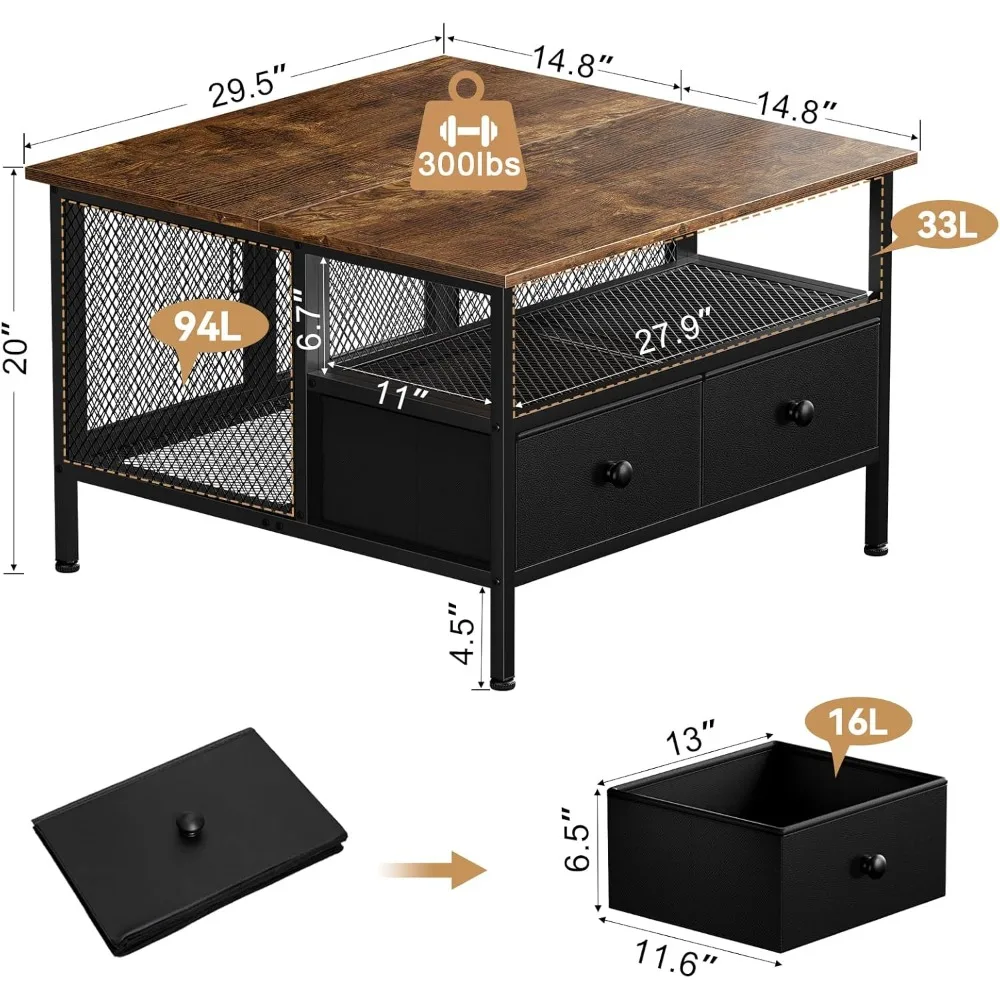
The consistent depth from any side is another practical advantage that shouldn’t be overlooked. This uniform dimension means that items placed on the table are equally accessible from all seating positions—there’s no “far side” where objects become difficult to reach. For enhanced functionality, consider exploring our mid-century modern lift-top coffee tables that combine classic design with modern convenience.
Surface Area Optimization: Ample Space for All Your Needs
Square coffee tables make exceptionally efficient use of their footprint, providing maximized usable surface area compared to round tables of similar dimensions. This practical advantage means more space for the items you use and display in your living room, from books and decorative objects to beverages and remote controls.
The geometric shape of a square naturally creates an organized arrangement of items. Many homeowners find that the four corners of a square table create intuitive zones for different purposes:
- One corner for decorative elements like a small plant or sculpture
- Another for practical items like remote controls or coasters
- A third for reading materials or current magazines
- The fourth for personal items that change with daily use
This natural quadrant system helps maintain order and organization on your table surface, reducing clutter and creating a more intentional display. When comparing rectangular vs. square coffee tables, many find that square options provide a more balanced and usable surface for their needs.
For entertainment purposes, square coffee tables excel at accommodating multiple people simultaneously. Whether you’re hosting a game night, serving appetizers, or simply gathering for conversation, the equal sides ensure that everyone around the table has the same access and experience. This equitable quality makes square tables particularly well-suited for social spaces.
Storage Solutions and Multi-Functionality
Many square coffee tables incorporate clever storage solutions that maximize their functionality without sacrificing style. The predictable shape lends itself particularly well to efficient storage designs that help keep living spaces tidy and organized.
Common storage features in square coffee tables include:
- Pull-out drawers that provide concealed storage for items you’d rather keep out of sight
- Open shelves beneath the tabletop for books, baskets, or decorative objects
- Compartmentalized storage sections for organized containment of smaller items
- Hidden compartments that maintain the table’s clean lines while providing practical storage
Lift-top square coffee tables offer exceptional versatility, transforming from a standard coffee table to a raised work surface or dining area with a simple mechanism. This adaptability is particularly valuable in smaller homes or apartments where furniture needs to serve multiple purposes.
Ottoman-style square coffee tables represent the pinnacle of multi-functionality, offering a combination of seating, storage, and surface area in a single piece. With a firm top for serving and display, plus interior storage for blankets or other items, these hybrid pieces are ideal for maximizing functionality in compact living spaces.
Mid-Century Modern Solid Wood Coffee Tables, Mid-Century Modern Teak Coffee Tables
$879.95 Select options This product has multiple variants. The options may be chosen on the product pageMid-Century Modern Danish Coffee Tables, Mid-Century Modern Oval Coffee Tables, Mid-Century Modern Solid Wood Coffee Tables
$390.05 Select options This product has multiple variants. The options may be chosen on the product pageMid-Century Modern Nesting Side & End Tables, Mid-Century Modern Nesting Table Sets, Mid-Century Modern Round Side & End Tables
Price range: $239.35 through $273.06 Select options This product has multiple variants. The options may be chosen on the product pageMid-Century Modern Lift Top Coffee Tables, Mid-Century Modern Square Coffee Tables
$454.73 Select options This product has multiple variants. The options may be chosen on the product pageMid-Century Modern Marble Top Coffee Tables, Mid-Century Modern Rectangular Coffee Tables, Mid-Century Modern White Coffee Tables
Price range: $163.28 through $189.22 Select options This product has multiple variants. The options may be chosen on the product pageMid-Century Modern Nesting Coffee Tables, Mid-Century Modern Nesting Table Sets
$361.45 Select options This product has multiple variants. The options may be chosen on the product page
Design Versatility: Aesthetic Impact of Square Coffee Tables
Square coffee tables make a distinct design statement in any living space, their clean geometric lines creating a sense of intentional order that complements various interior styles. The square shape has a timeless quality that allows it to transition seamlessly between traditional, contemporary, and eclectic design approaches.
In modern interiors, the geometric precision of a square table reinforces minimalist principles and clean-lined aesthetics. In more traditional settings, the same shape takes on a sense of stability and permanence, especially when crafted from classic materials like solid wood or stone. Industrial styles benefit from the structured geometry of square tables, particularly when paired with metal components or rougher textures.
The material choice dramatically affects the visual impression of square coffee tables. Glass tops create a sense of lightness and visual expansion, making them excellent choices for smaller spaces. Heavy materials like stone or thick wood convey substance and permanence. Our selection of mid-century modern solid wood coffee tables showcases how natural materials enhance the inherent beauty of square designs.
The proportions and scale of square coffee tables also influence their aesthetic impact. A low-profile square table creates a sleek, contemporary feel, while a more substantial height might offer traditional appeal. These variations allow square tables to adapt to different design visions while maintaining their fundamental geometric advantage.
Material Showcase: Highlighting Craftsmanship and Texture
The flat, uninterrupted surface of a square coffee table provides an ideal canvas for showcasing beautiful materials and exceptional craftsmanship. Unlike some other shapes that might interrupt patterns or visual flow, square tables allow materials to display their natural beauty across a consistent plane.
Wood grain patterns benefit particularly from square formats, where the continuous surface highlights the natural variation and direction of the grain. Whether it’s the rich, dark tones of walnut, the warm honey hues of oak, or the distinctive patterns of exotic woods, the square shape allows the material’s natural character to take center stage.
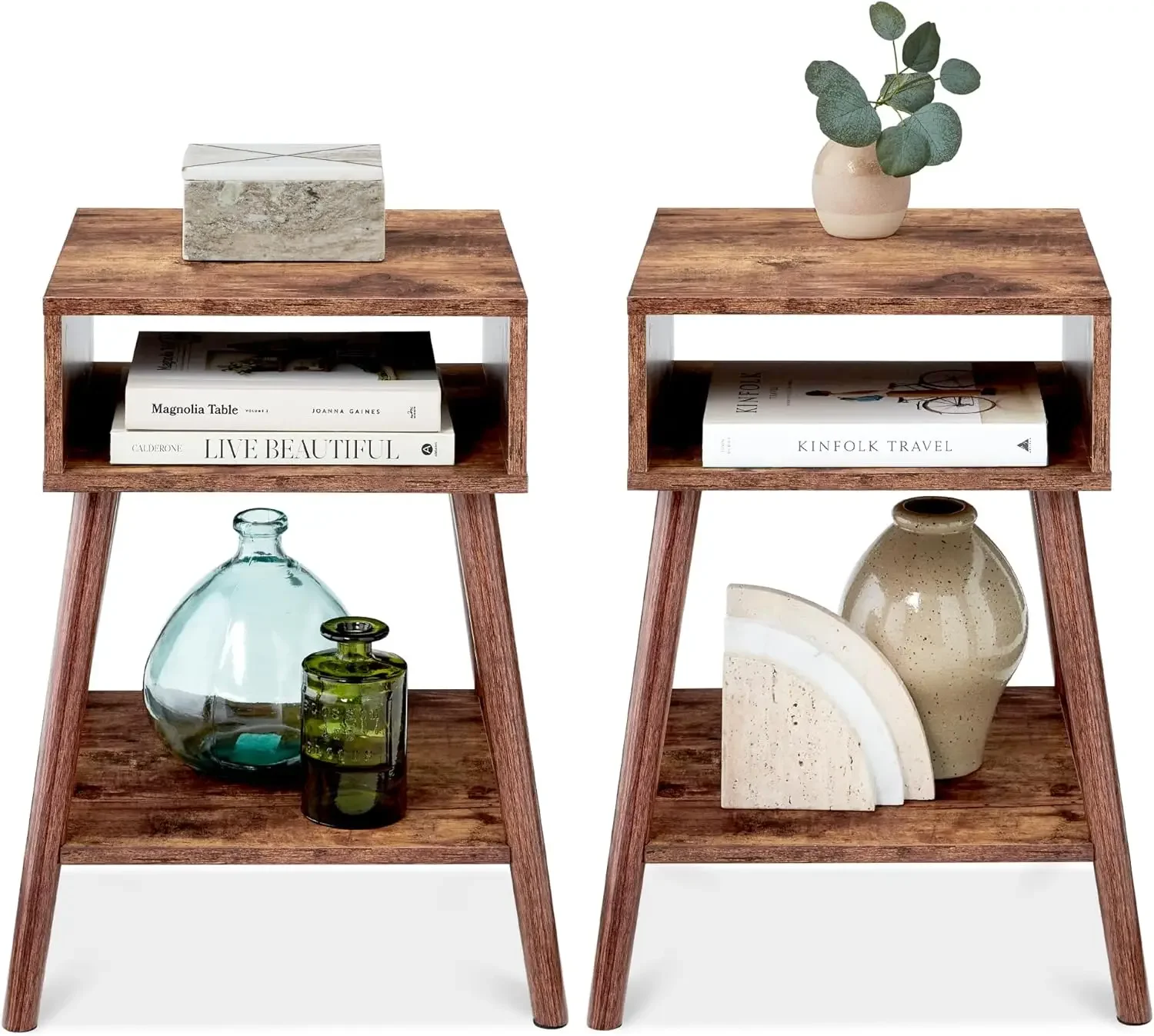
Stone and marble surfaces also shine on square tables, where veining patterns can flow dramatically across the surface without awkward interruptions. The defined edges frame the natural material like artwork. Our mid-century modern marble-top coffee tables demonstrate how premium materials enhance the inherent elegance of square designs.
Material combinations work exceptionally well with square tables, creating interesting contrasts while maintaining visual harmony. Glass tops with wood bases allow light to play through the surface while showcasing the structural elements below. Metal frames supporting stone tops create a tension between lightness and weight that adds visual interest to living spaces.
Style-Matching Versatility: From Traditional to Contemporary
One of the square coffee table’s greatest strengths is its remarkable ability to adapt to different interior design styles. This chameleon-like versatility makes square tables a safe yet sophisticated choice for homeowners who may evolve their décor over time.
In contemporary settings, square coffee tables with clean lines, minimal ornamentation, and modern materials create a sleek, intentional focal point. Their geometric precision complements the ordered aesthetic of modern design while providing practical functionality.
Traditional interiors benefit from square tables with classic details like carved edges, turned legs, or inlay work. The foundational shape provides stability and familiarity, while craftsmanship details add the character and warmth expected in traditional settings.
Mid-century modern spaces pair naturally with square coffee tables, as the style itself embraces clean geometric forms and functional beauty. Understanding which styles go well with mid-century modern helps create cohesive, harmonious interiors that feel curated rather than haphazard.
For eclectic or transitional spaces, square coffee tables can serve as a grounding element that helps unify diverse design elements. Their fundamental simplicity allows them to bridge different styles without creating visual competition or confusion.
Making the Right Choice: Selecting Your Ideal Square Coffee Table
Choosing the perfect square coffee table involves balancing aesthetic preferences with practical considerations about your space and lifestyle. Taking time to assess these factors will ensure you select a piece that enhances both the look and functionality of your living area.
Size considerations should be your first priority. The ideal square coffee table should maintain proportional harmony with surrounding furniture, particularly your sofa. A commonly cited design guideline suggests that your coffee table should be approximately two-thirds the length of your sofa for visual balance. For a standard 84-inch sofa, this translates to a square table of roughly 56 inches (or more commonly, a 36-48 inch table that maintains proper proportion while allowing adequate clearance).
Height relationships between your coffee table and seating are equally important for comfort and functionality. The table surface should be at the same height as your sofa cushions or 1-2 inches lower—typically between 16-18 inches from the floor. This relationship ensures comfortable use without awkward reaching or leaning.
Proper clearance around your coffee table is essential for comfortable movement and accessibility. Allow 18-24 inches between the table and surrounding seating to accommodate legs and permit easy navigation around the space. For more specific guidance on dimensions and positioning, our guide to finding ideal square coffee table dimensions offers valuable insights.
Material selection should reflect both your aesthetic preferences and practical lifestyle needs. Households with young children might prefer tables with rounded corners and durable, easy-to-clean surfaces. Homes focused on entertaining might prioritize stain-resistant materials that can withstand occasional spills.
Proportion and Scale: Finding the Perfect Size
Achieving the right proportion and scale is crucial when selecting a square coffee table. A properly sized table creates visual harmony and ensures practical functionality for your specific space.
For average living rooms (approximately 12’ x 18’), a 36-inch square coffee table often provides an ideal balance. Larger rooms can accommodate 48-inch or even 60-inch square tables, while compact spaces might be better served by 24-30 inch options. The key is maintaining enough clearance for comfortable movement while ensuring the table doesn’t appear disproportionately small or overwhelmingly large.
The height of your square coffee table significantly impacts both its appearance and functionality. Standard coffee tables range from 16-18 inches high, aligning approximately with sofa seat height for comfortable use. Lower tables (14-15 inches) create a more casual, lounge-like feel, while slightly higher tables (19-20 inches) might better serve those who regularly eat or work at their coffee table.
When considering scale, remember that square tables have a stronger visual presence than round tables of the same dimensions. Their defined corners extend the perceived size of the piece, making them appear larger in the space. Our collection of black mid-century coffee table designs demonstrates how proportion and scale influence the overall impression of these versatile pieces.
Proper clearance is non-negotiable for comfortable living. Ensure at least 18 inches between your table and seating (24 inches is ideal if space permits) and maintain clear pathways of at least 30 inches through main traffic areas. These measurements prevent the cramped feeling that can occur when furniture is positioned too closely together.
Square vs. Other Shapes: A Comparative Analysis
While square coffee tables offer numerous advantages, understanding how they compare to other common shapes helps ensure you’re making the best choice for your specific needs and preferences.
When compared to round coffee tables, square tables offer:
* More efficient surface area—a 36-inch square table provides approximately 1,296 square inches of surface, while a 36-inch round table offers only about 1,018 square inches
* Better space definition and anchoring of seating arrangements
* More straightforward placement against straight-edged furniture
* Easier arrangement of items in an organized manner
However, round tables excel in:
* Safety for households with young children (no sharp corners)
* Creating flow in tight spaces where corners might impede movement
* Facilitating face-to-face conversation in intimate seating arrangements
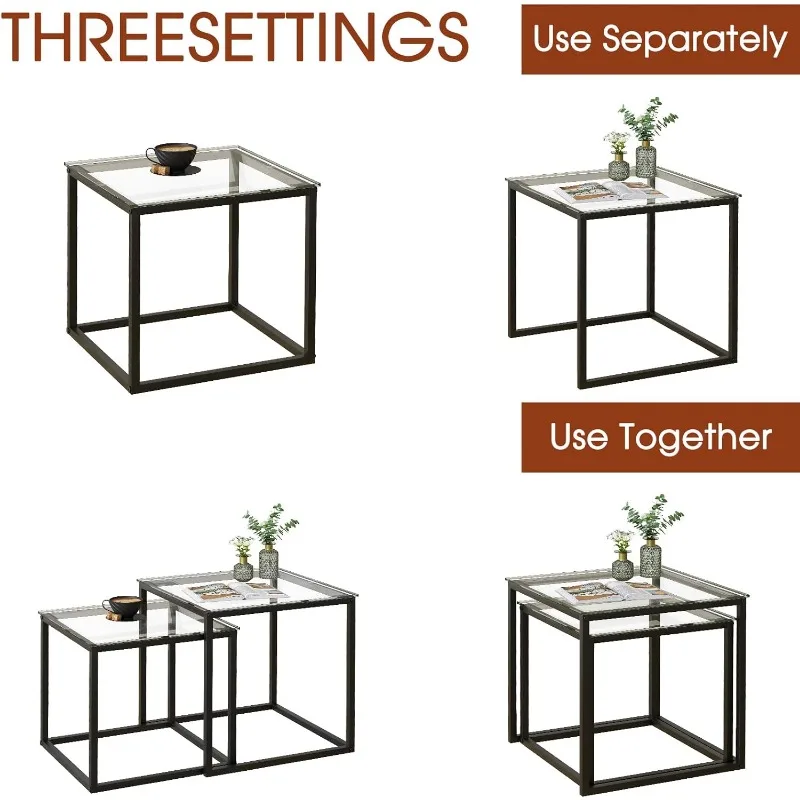
Rectangular tables share many advantages with square tables but offer different spatial dynamics:
* They work particularly well with longer sofas where a square table might leave too much empty space
* They can better define direction and orientation in a room
* They may fit better in narrow living rooms where a large square might impede traffic flow
Oval tables combine some benefits of both rectangular and round tables:
* They offer the directional quality of rectangles with the softer edges of round tables
* They can work well in transitional spaces that blend different design elements
* They provide good traffic flow while maintaining substantial surface area
Your choice ultimately depends on your specific space constraints, furniture arrangement, aesthetic preferences, and functional needs. For many living rooms, the balanced proportions and practical benefits of square coffee tables make them an ideal centerpiece that enhances both form and function.
Styling Your Square Coffee Table: Design Tips for Maximum Impact
A well-styled coffee table becomes the living heart of your seating area, reflecting your personality while enhancing the room’s design. Square coffee tables offer unique styling opportunities thanks to their symmetrical shape and defined quadrants.
The rule of thirds provides an excellent starting point for styling square tables. Visually divide your table into a grid of nine equal squares (three across, three down), and position your most important items at the intersection points of these lines. This approach creates a naturally balanced and visually appealing arrangement that draws the eye across the entire surface.
For a more structured approach, embrace quadrant styling by treating each quarter of your table as a distinct zone with its own purpose:
* A decorative quadrant with an eye-catching sculptural element or fresh flowers
* A functional quadrant for coasters, remote controls, or other frequently used items
* A personal quadrant featuring books, photographs, or meaningful objects
* An empty or minimally styled quadrant that creates visual breathing room
Layering is essential for creating visual interest on your square coffee table. Vary the heights of objects by stacking books or using decorative boxes as platforms for smaller items. This dimension creates a more dynamic and engaging tableau. For specific inspiration on creating stylish arrangements, our guide to styling black mid-century coffee tables offers valuable tips that apply to tables of any material or color.
Balance is crucial when styling square tables. Distribute visual weight evenly across the surface to maintain the table’s inherent symmetry, or create intentional asymmetry that still feels balanced through careful attention to the size, color, and placement of objects.
Frequently Asked Questions About Square Coffee Tables
What size square coffee table works best for a standard three-seat sofa?
For a standard three-seat sofa (typically 72-84 inches long), a square coffee table between 30-36 inches provides ideal proportion while maintaining adequate clearance for movement. The table should be approximately two-thirds the length of the sofa for visual balance.
Are square coffee tables good for small spaces?
Yes, square coffee tables can work extremely well in small spaces, provided you choose an appropriately sized table. Their predictable shape creates clear traffic patterns, and their efficient use of space makes them practical for compact living areas. Consider a 24-30 inch square table for smaller rooms.
How should I style a square coffee table without making it look cluttered?
Follow the rule of three by limiting your table to three main groupings of items. Use a tray to contain smaller objects, incorporate objects of varying heights, and leave some empty space to prevent a cluttered appearance. Remember that negative space is as important as the decorative elements themselves.
Do square coffee tables work well with sectional sofas?
Square coffee tables are particularly well-suited to sectional and L-shaped sofas. Their geometry complements the angular arrangement of sectionals, and they provide equal access from multiple seating positions. Position the table so it’s equidistant from each section of the sofa for optimal functionality.
What materials are best for families with young children?
For households with children, consider square coffee tables with rounded corners or padded edges for safety. Durable, easy-to-clean materials like sealed wood, laminate, or certain metals resist scratches and stains. Tables with storage can help contain toys and other items when not in use.
Can I use a square coffee table with a round rug?
Yes, pairing a square coffee table with a round rug creates an interesting visual contrast that can enhance your design. For proper proportion, ensure the rug extends at least 18-24 inches beyond all sides of the table, and position the table in the center of the rug for a balanced appearance.

